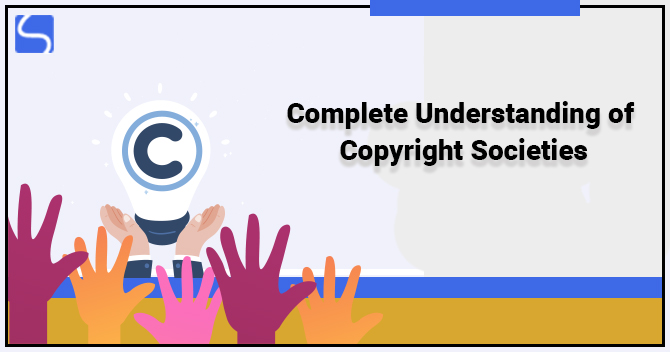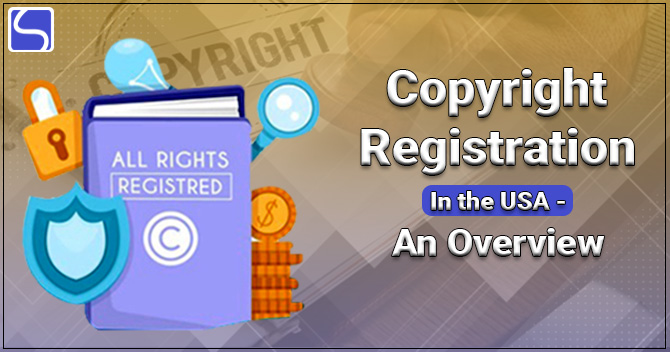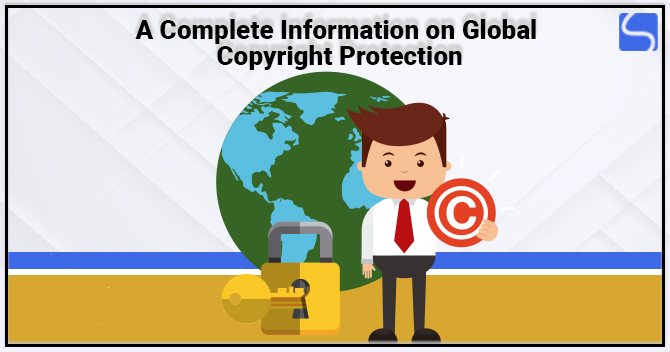All You Need to Know About YouTube’s Copyright Policy
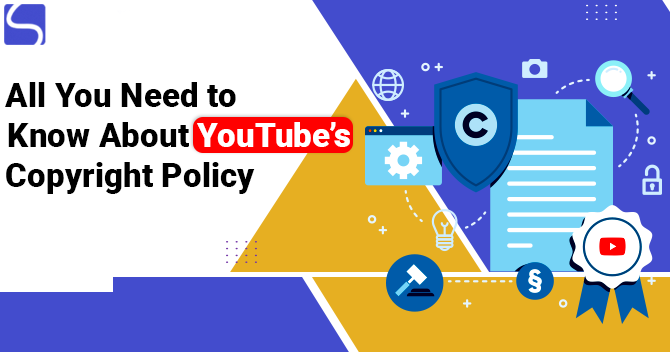
Karan Singh | Updated: Sep 22, 2021 | Category: Copyright
Nowadays, YouTube has become one of the biggest video-sharing platforms in the world. As YouTube increases, the number of creators also increases all around the world. But back in its starting days, YouTube as a video-based platform was not monetized. So, the acquisition of YouTube by Google enables YouTube to run ads, thereby generating revenue for the company as well as the creator or community. The monetization boosts the growth of YouTube, empowering it to become the most significant digital media industry. The monetary of YouTube has attracted a massive audience towards this platform. Various malpractices for triggering income from YouTube-like Copyright Infringement, reuse of original content, and duplication became frequent, which impacted the monetary benefits of the original creators. So to deal with such issues, YouTube has developed a detailed YouTube’s Copyright Policy. Scroll down to check YouTube’s Copyright Policy.
Table of Contents
YouTube’s Copyright Policy – An Overview
YouTube takes Copyright Infringement very seriously, and a video claimed to be violating the actual owner’s Copyright is usually taken down or blocked. If an individual publishes a video created by someone else without valid permission or license, then he is liable to Copyright Infringement. YouTube doesn’t allow any user to use the content of the original owner even if they don’t have any monetary interest in copying the content. Even if someone else is copying a small portion of a YouTube video, it is also considered a Copyright Infringement.
Following are the two main reasons to take down or blocked an uploaded video:
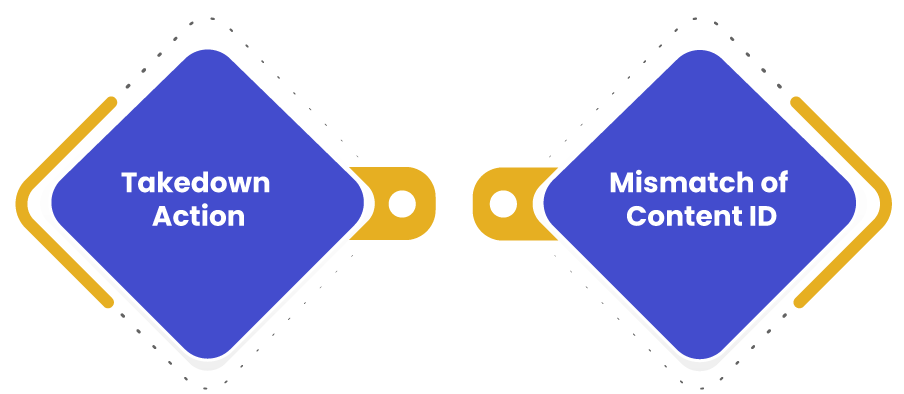
- Takedown Action: This action occurs when an infringer uploads content or video of an original creator without any permission or license; the actual creator can file a Takedown notice through the platform. This notice is a legal notice regulated by the Principles of Law. After filing the notice, YouTube examines the notice and takes down the content if it is satisfied that the infringer has violated the owner’s rights. An individual filing this notice has to be sure about their rights as he or she is initiating lawful action against the opposite party.
- Mismatch of Content ID: YouTube also developed a unique tool which is known as “Content ID”. YouTube grants a unique content-id for videos to the owners of Copyright. Whenever a video is published in YouTube, the algorithm of YouTube checks whether the video or audio uploaded is similar to the million of those published to YouTube. If the uploaded video matches, YouTube by itself files a Copyright claim for the owner, releasing the owner to take action by himself. In the case of content-id mismatching, the owner has three options:
- To monetize the video, The actual owner of the video gets more revenue and ad traffic for their infringed video. The copied content doesn’t receive any revenue, but the video remains on YouTube.
- To block the video.
- The original owner gets viewer data to get details about the video.
Why is it necessary for YouTubers to know YouTube’s Copyright Policy?
- As YouTube monetizes, many content creators worldwide are highly motivated to take YouTube as a full-time career because it generates a good amount of money. For this intend, a channel must enable monetization and the video uploaded as per the “Advertiser Friendly Guidelines” prescribed by YouTube.
- The primary source of revenue from YouTube comes through running ads in the video. A YouTube channel becomes more exposed to ads when the YouTubers popularity increases. Thus, when content created by a creator is re-uploaded by another party or creator, the content gets duplicated, and the video’s owner loses revenue. Therefore, a YouTuber should be aware of YouTube’s Copyright Policy along with the procedures regulating Copyright strike down and content-id mismatch.
- If the rights of any YouTuber are infringed, then he or she should know the process to file a takedown notice for deleting the infringing video. ThoseThose who are aware of Copyright strike down notice should know their remedies, such as filing a counter-notice under the DMCA (Digital Millennium Copyright Act, 1999).
- A video alleged to match with the content of an existing video is either loses or blocks its ability to make monetary gains for the creator. On the other side, YouTubers should also be aware of their rights.
What can a YouTuber Do when someone else copies your content?
If the content id of YouTube fails to recognize the copying content of an original creator, then a YouTuber can file a report for the duplication. Following is the step for the same:
- First, you have to click the Report Video options found in the video that is claimed to be violating your right and then select the option “Infringes My Rights” and click on the option shown as “Infringes My Copyrights”.
- Once you ensure that you hold the rights for the content, and if the content usage doesn’t come under fair use, then a Takedown notice can be made by filing a web form given by the platform. Click on the “Submit Copyright Compliant” button.
- After that, you have to state the party affected by the infringement and paste the violating video link and original video link. YouTube gives an option to add more videos in case you find more than one copied video.
- To file a complaint under the DMCA or Digital Millennium Copyright Act, you have to give your personal information like your name, address, contact numbers, email id, etc. Also, you have to submit a declaration stating that the notice made is:
- In excellent faith;
- Correct;
- The party is informed about the legal ramifications in the case of a false notification;
- Usage of content is not allowed by the actual Copyright owner;
- The complainant is the actual owner or certified agent who can act upon the violation of such rights.
- After the above step, YouTube will mail you regarding the takedown request’s authentication and inform the opposite party regarding the complaint filed against him.
Note: All the YouTubers should know that false or incorrect allegations can terminate or suspend your YouTube account, and he or she may be accountable for other legal consequences also. If the owner finds that he or she had misidentified the content or had filed an infringement notice by mistake, then YouTube gives an option for retracting such notice or complaint.
Do This When Your Video is Removed for Copyright Infringement
Following are two remedies a creator can use when his video is removed for Copyright Infringement:
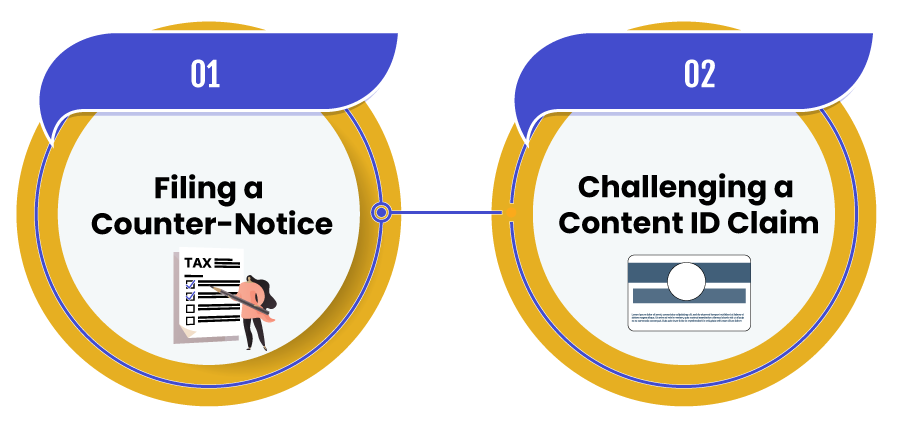
- Filing a Counter-Notice: When an owner files a takedown notice for publishing a video of YouTube without the owner’s approval, YouTube takes down the video. But, the opposite party can file a counter-notification for restoring the takedown video. This notification can be filed when the party confirms that their use of the content falls under the Fair Use Policy or if there is misrecognition of content by the owner. In case the video is removed for other reasons, the opposite party has to wait till the expiry of the Copyright Strike. YouTube examines the notification and checks the ground by which the creator has contested against the takedown notice. Then, the counter-notification is given to the claimant. Within ten days, the claimant must prove to commence a statutory action to keep the content down.
- Challenging a Content ID Claim: A YouTube creator whose video has been found similar to the existing content can challenge such claim:
- If the content was unidentified;
- If it’s your original content;
- If the creator has valid licenses or certification to such content;
- If the usage of content comes under fair use or dealing.
When a dispute regarding content id is filed, the Copyright owner has to respond within thirty days. If the Copyright owner did not reply within thirty days, then the claim expires on its owner. The owner of Copyright can:
- Support the Claim: If they believe their claim is still valid, they can support the claim. If you think it was mistakenly upheld, you may be able to appeal their decision.
- Release the Claim: If they support your dispute, then they can release their claim. If you were earlier monetizing the video, your monetization settings would be recovered automatically when all claims on your video are released.
- Takedown your Video: They can submit a request for a takedown, which means you will get a Copyright Strike on your YouTube Account. In this case, you have to file a counter-notification.
Note: When a content-id dispute is started, the content monetization is withheld, and it is distributed later to the appropriate party.
Can You Use Copyrighted Work without breaching the law?
In some instances, it may be possible to utilize Copyright-protected video content without violating the Copyright of the owner. This is related to fair use, also known as fair dealing; it is a structure to allow the legal use or imitation of work without having to seek permission from the owner of Copyright.
Hence, your video still can be claimed by a Copyright owner regardless of the fact you may have credited the owner of Copyright, not monetized the violating video, bought the content legally or even said that no Copyright Infringement is intended.
What Will Happen When Your Video is Removed from YouTube?
When a video is removed, a legal notice is filed by the content owner; it’s termed as a “Copyright Strike”. YouTube removed such videos on the owner’s request for complying with the Copyright Laws like DMCA. When the content creator gets a Copyright Strike for the 1st time, it acts as a warning only and the individual is taken to the Copyright School of YouTube, wherein the content creator has to check some videos and answer some important questions on the YouTube Copyright Policy. When a YouTube account is subjected to a Copyright Strike, it loses the capability to monetize the content. Copyright strike’s details can be accessed from the YouTube Studio website or app.
In case your YouTube channel gets three Copyright Strikes, then:
- You cannot create new channels on YouTube;
- Your YouTube account and other associate channels get terminated;
- All the uploaded videos will be removed.
Following are some important points by which you can resolve the Copyright Strike problem:
- In case your video is taken down or removed mistakenly, the file a counter-notice, or if the usage of content falls under fair use or dealing;
- After the expiry of ninety days;
- Asking the complainant to take back their Copyright Infringement notice.
What is the Main Concept of Fair Use? – YouTube’s Copyright Policy
Basically, Fair Use is protection to a Copyright Infringement claim. Fair use is a legal rule that tells you can reuse Copyright protected things under certain conditions without getting approval from the owner of Copyright. In India, according to the Section 53 of the Copyright Act[1], the concept of fair use is replaced by fair dealing. When an individual’s use of Copyright content is fair would depend completely upon the facts and conditions of a given case. There is a minor difference between infringement & fair dealing.
Providing the rules of fair use & fair dealing vary nationwide, YouTube doesn’t judge upon the purpose of whether particular work is fair use. Moreover, it does furnish certain tools that enable the court’s fair use, such as timestamps to decide the quantum of content used, financial records to know the level at which the use may prejudice the profits making of the original content. Moreover, there are some instances in which the use of Copyrighted content is seemingly fair use. Hence, before filing for the content takedown, YouTube asks its users to check whether the use of content is fair or not. To defend freedom of speech, YouTube has invited creators to join a programme that seeks to cover users up to one million dollars in legal costs if a takedown results in a Copyright Infringement Case.
In the purview of the same, it’s vital to note in what cases fair use will not be applicable:
- When the copied work is not transformative;
- When the copied work is used commercially to gain profit for the creator;
- If the development of the original work obstructs the effect of the actual work, whether financially or otherwise.
Conclusion
It can be fairly said the YouTube’s Copyright Policy is strict and restrictive. Every content creator who wants to take benefits of YouTube’s massive audience must be well aware of YouTube’s Copyright Policy since an infringement case is quite a costly affair. It remains to be seen whether the Copyright policies of YouTube will smother the creators completely or will guide in a host of new original content.
Read our article:Copyright Laws and IPR Laws – Know the Differences












